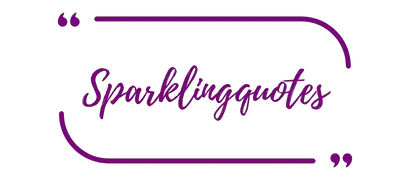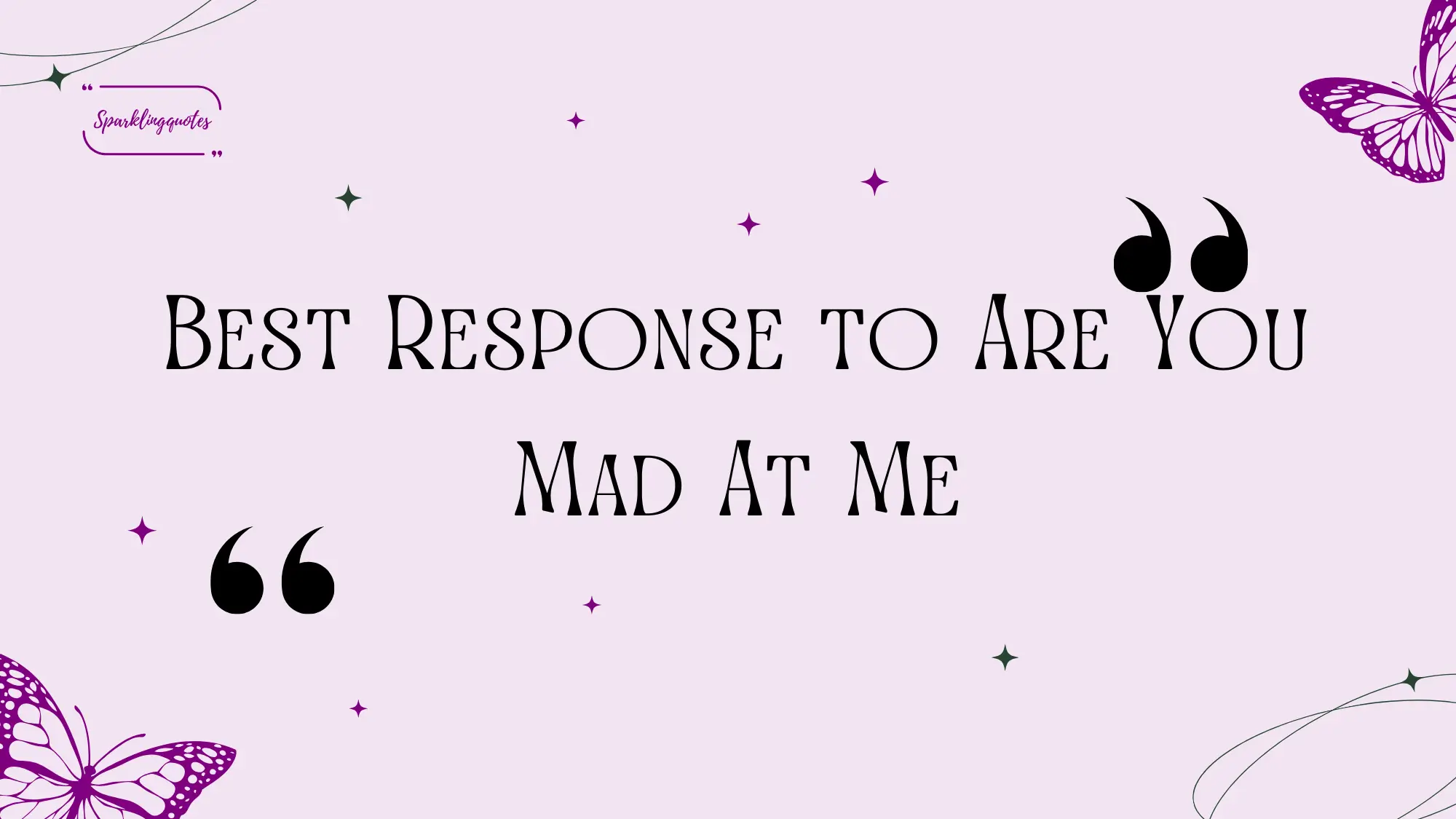Being asked, “Are you mad at me?” can catch you off guard. It is essential to give the best response to are you mad at me to maintain the integrity of your relationship.
The tone, timing, and relationship between you and the person asking can make it a tricky question to navigate. When you are caught in this situation, the best approach is honesty combined with sensitivity.
Table of Contents
How you respond could either mend a misunderstanding or unintentionally create more tension. There is no one-size-fits-all answer, but there are various ways you can address the question based on your emotions and the situation at hand.
Your response needs to reflect your feelings without being overly harsh. It is also crucial to understand the context of the question, whether it’s coming from a friend, partner, colleague, or family member.
In this article, we will explore the best response to are you mad at me? in different situations. These responses will help you communicate your feelings clearly while being considerate of the other person’s emotions.
1. Expressing Honest Concern

If you are genuinely upset or hurt by something, it is better to express your feelings honestly rather than bottling them up. Being upfront can prevent future misunderstandings and build a foundation of trust.
1. “Yes, I am a bit upset because what you said earlier hurt me. Can we talk about it?”
2. “I am not mad, but I am a little hurt. I think it would be good to discuss what happened.”
3. “I am disappointed in how things played out, but I do not want to stay mad. Let’s work through this.”
4. “I am upset, but I value our relationship too much to let this come between us. Can we talk?”
5. “I am feeling hurt by what happened, and I would like us to clear the air.”
These responses allow you to share your true feelings while also showing a willingness to resolve the issue. This approach encourages open communication and helps prevent the problem from escalating.
2. Reassuring and Calming Responses
Sometimes, the person asking if you are mad might just be worried about your feelings. Reassuring them can help alleviate their concerns and maintain a positive interaction.
1. “No, I am not mad at you. I was just lost in thought.”
2. “I am not mad, just a little tired. Everything is fine.”
3. “I am not upset with you at all. Sometimes I just need a moment to myself.”
4. “No worries, I am not angry. I think we both just need some space to think.”
5. “Not at all. I am not mad. Sometimes I just have a lot on my mind.”
These responses can help calm the person down and assure them that everything is okay. It’s important to address their concerns without being dismissive.
3. Responses that Shift Focus to Resolution
If the situation is tense, it’s best to focus on finding a solution rather than dwelling on the emotions. These responses emphasize moving forward and resolving the issue at hand.
1. “I do not want to be mad. How can we fix this together?”
2. “Let’s not focus on being mad. Let’s work on finding a solution.”
3. “I am not mad. I just want to understand what happened and make sure we are both okay.”
4. “Instead of being mad, let’s talk about how we can prevent this from happening again.”
5. “Being mad does not help. Let’s figure out how to move forward.”
These responses show that you are more interested in resolving the issue than holding onto negative emotions. They encourage collaboration and problem-solving.
4. Responses for When You’re Not Sure
Sometimes, you may not even know if you are truly mad or just confused or hurt. It’s okay to express that uncertainty.
1. “I am not sure if I am mad. I think I just need some time to process everything.”
2. “I do not know if I am mad, but I am definitely not feeling okay right now.”
3. “I am not mad, but I am feeling a bit confused. Can we talk more about this?”
4. “I need some time to figure out how I feel. I am not sure if it is anger or something else.”
5. “I am not sure if I am mad, but I definitely want to talk about this more.”
These responses allow you to express your uncertainty without committing to a specific emotion. This can open the door for further discussion and clarification.
5. Lighthearted Responses to Diffuse Tension

If the situation is not too serious, a lighthearted funny quotes can help diffuse any potential tension and keep things positive.
1. “Mad? No way! I am just too fabulous to be mad.”
2. “Mad? Only if you ate my last cookie!”
3. “Me, mad? That is as likely as me giving up coffee!”
4. “Mad? Not a chance. I am too busy planning my next vacation!”
5. “Mad? Only if we cannot agree on what to watch next!”
These responses can lighten the mood and reassure the other person that everything is fine.
6. Clarifying the Situation
Sometimes, the question can arise from a misunderstanding. Clarifying the situation can help both parties understand each other better.
1. “Why do you think I am mad? Let’s clear this up.”
2. “I am not mad, but it seems like there might be a misunderstanding. Can we talk about it?”
3. “I do not feel mad, but if I gave that impression, I apologize. Let’s figure out what happened.”
4. “I am not mad, but I can tell something is off. Can we discuss it?”
5. “I do not think I am mad, but I would like to understand why you feel that way.”
These responses allow you to address any potential misunderstandings and clear the air.
7. Responses that Express a Need for Space
If you need some time alone to process your feelings, it’s important to communicate that need without pushing the other person away.
1. “I am not mad, but I do need some time to myself right now.”
2. “I am not angry, but I think I need some space to think things over.”
3. “I do not feel mad, but I could use some alone time to sort out my thoughts.”
4. “I am not mad, but I need some time to reflect on what happened.”
5. “I am not upset, but I think some space would help me clear my mind.”
These responses express your need for space without making the other person feel rejected.
8. Affirming the Importance of the Relationship
Sometimes, the best way to respond is to affirm the value of the relationship, which can reassure the other person and strengthen your bond.
1. “I am not mad because our relationship is too important to me.”
2. “Even if I were mad, our relationship means too much to me to let that come between us.”
3. “I value our friendship too much to stay mad. Let’s talk about this.”
4. “No, I am not mad because I care about you and our relationship too much.”
5. “Our relationship is too important to me to let something like this make me mad.”
These responses show that you prioritize the relationship over any temporary emotions, which can reassure the other person.
9. Setting Boundaries
If the question is asked in a way that feels manipulative or if you feel pressured, it might be necessary to set boundaries.
1. “I am not mad, but I do not appreciate being asked in this way.”
2. “I am not mad, but I feel like this question is putting me on the spot. Let’s talk when we are both calm.”
3. “I am not mad, but I do not like feeling pressured to answer right now.”
4. “I am not upset, but I need to set a boundary about how we handle these situations.”
5. “I am not angry, but I do not think this is the best way to address our issues.”
These responses help maintain your emotional well-being while addressing the other person’s concerns.
10. Best Response to Are You Mad at Me Through Humor
Using humor can be a great way to diffuse tension and keep the conversation light, especially if the situation is not too serious.
1. “Mad? No way. I am just practicing my ‘serious face’ for when I win the lottery.”
2. “Me, mad? Only if there is no more chocolate in the world!”
3. “Mad? I do not even know how to spell that word!”
4. “Mad? Only if my favorite team loses tonight!”
5. “Mad? I am too busy planning my world domination to be mad!”
These responses can help ease the tension and make the other person smile, shifting the conversation to a more positive tone.
11. Responses that Encourage Open Communication

If you want to foster an environment of open and honest communication, your response should encourage the other person to share their feelings.
1. “I am not mad, but I would love to hear how you are feeling.”
2. “I am not upset, but I think it is important that we both share what we are thinking.”
3. “No, I am not mad. I think talking about this openly will help us understand each other better.”
4. “I am not angry, but I think it would be good for us to have an honest conversation about this.”
5. “I am not mad, but I am open to hearing how you feel. Let’s talk.”
These responses encourage dialogue and show that you are open to hearing the other person’s perspective.
12. Responses When You Are Genuinely Not Mad
If you are not mad at all, it is important to convey that clearly to avoid any unnecessary confusion or concern.
1. “I am not mad, not even a little bit. Everything is fine.”
2. “No, I am not mad at all. There is nothing to worry about.”
3. “I am not upset. I think there might be a misunderstanding, but I am not mad.”
4. “I am not angry in the slightest. We are good.”
5. “No, I am not mad. Let’s not overthink this.”
These responses provide clear reassurance that you are not upset, which can help the other person feel more at ease.
13. Acknowledging the Question with a Question
Sometimes, turning the question back to the other person can open up a more in-depth conversation.
1. “Why do you think I am mad? Is something bothering you?”
2. “What makes you think I am mad? Let’s talk about what is on your mind.”
3. “Why do you feel like I am mad? I am curious to know what you are thinking.”
4. “What makes you ask if I am mad? Is there something you are worried about?”
5. “Why do you think I would be mad? Let’s discuss what is really going on.”
These responses encourage the other person to express their feelings and thoughts, which can lead to a better understanding between both of you.
14. Responses that Show Empathy
Showing empathy can be a powerful way to respond, especially if the other person seems worried or anxious.
1. “I am not mad, but I can see why you might think that. Let’s talk about it.”
2. “I am not upset, but I can understand why you would ask. I care about how you feel.”
3. “I am not angry, but I want to make sure you feel heard. Let’s discuss what is bothering you.”
4. “I am not mad, but I can tell this is important to you. Let’s talk it through.”
5. “No, I am not mad, but I care about how you are feeling. Let’s work this out together.”
These responses convey that you are not only not mad but also care about the other person’s feelings, which can strengthen your relationship.
15. Final Words of Reassurance
Ending the conversation with a reassuring note can help close the discussion on a positive and comforting note.
1. “I am not mad, and I hope you feel better knowing that.”
2. “No, I am not mad. I value our relationship too much to let anything come between us.”
3. “I am not upset, and I am here if you want to talk more.”
4. “I am not angry, and I want to make sure we are both okay.”
5. “I am not mad, and I hope we can move forward without any hard feelings.”
These responses aim to reassure the other person that there are no lingering negative emotions, allowing both of you to move on from the situation.
Conclusion
When asked, “Are you mad at me?”, your response holds the power to shape the outcome of the conversation. Whether you choose to express your true feelings, offer reassurance, or shift the focus towards resolution, the key is to communicate with honesty and empathy.
It is essential to consider the context and the relationship you share with the person asking the question. This will guide you in choosing the most appropriate response. By using one of these best response to are you mad at me, you can handle the situation with grace, ensuring that your relationships remain strong and positive.
Open communication is the foundation of any healthy relationship. So, whether you are upset or not, expressing yourself in a way that invites understanding and resolution is always the best approach.

